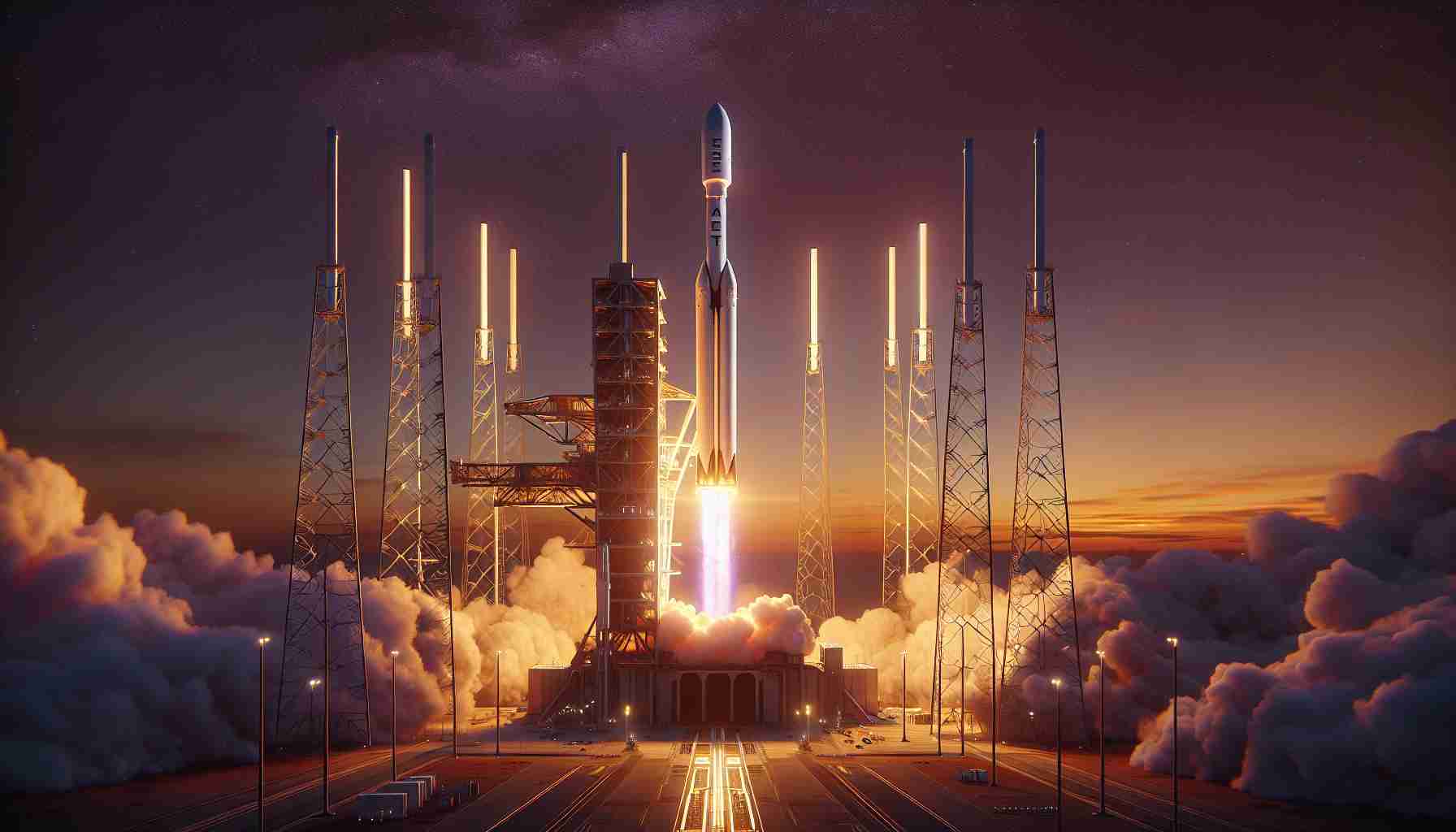
Brevard County, Florida, is preparing for an exciting event as SpaceX gears up for another Falcon 9 rocket launch. This latest endeavor aims to place 22 Starlink satellites into orbit, marking a significant milestone in satellite deployment. According to SpaceX announcements, the liftoff is scheduled for 5:47 p.m. local time, with additional time slots available until 9:47 p.m. in case of delays.
This launch is particularly notable as it could set a new record for the most rocket launches in a single year from Florida’s Space Coast. If successful, it will mark the 73rd launch of the year, surpassing the previous record. The 45th Weather Squadron has indicated that weather conditions have a mere 10% chance of hindering the launch, a statistic that remains constant for the following day’s backup opportunity.
Furthermore, this mission showcases the prowess of a seasoned first-stage booster, which has previously facilitated 18 other missions. After delivering its payload, the booster is scheduled to land on the droneship, Just Read the Instructions, stationed in the Atlantic Ocean. With the blend of advanced technology and ambitious goals, SpaceX is set to make history once again, showcasing the continuous advancements in space exploration accessible to humanity.
Upcoming Falcon 9 Launch Promises Record-Breaking Milestone
As Brevard County, Florida gears up for another Falcon 9 rocket launch, the space community is buzzing with excitement over the potential for a historic achievement. This upcoming launch, aimed at deploying 22 Starlink satellites, is on track to break records not only for the number of launches in a year from Florida’s Space Coast but also for the efficiency and reliability of satellite deployment.
Launch Timing and Details
Set for 5:47 p.m. local time, with backup launch opportunities until 9:47 p.m., this mission continues SpaceX’s relentless drive to enhance global internet connectivity through its Starlink satellite constellation. Each Falcon 9 launch contributes to SpaceX’s objective of achieving a broadband network that will comprehensively serve users in remote areas.
Key Questions and Answers
1. What record will this launch break?
– This launch could mark the 73rd mission by SpaceX in 2023, setting a new record for rocket launches from the Florida Space Coast.
2. What are the technological innovations associated with this launch?
– SpaceX’s Falcon 9 rocket utilizes reusable booster technology, which has significantly reduced the cost of satellite deployment and allowed it to launch multiple missions in quick succession.
3. What are the primary goals of the Starlink project?
– The Starlink project aims to provide high-speed internet access to underserved areas worldwide, enabling improved communication, education, and economic opportunities.
Key Challenges and Controversies
While the anticipation surrounding this launch is palpable, several challenges and controversies remain:
– Space Debris Concerns: The increasing number of satellites in orbit raises valid questions about space debris and the sustainability of space operations. As Starlink aims to deploy thousands of satellites, regulators and experts express concern over potential collisions and the long-term impact on low Earth orbit.
– Regulatory Hurdles: SpaceX has faced scrutiny from regulatory bodies regarding the environmental impact of its launches and satellite deployments. The company must navigate a complex web of regulations which can delay launches and increase costs.
Advantages and Disadvantages
Advantages:
– Increased Connectivity: The launch of additional Starlink satellites brings the promise of greater internet access, especially in remote regions where traditional service providers are absent.
– Cost Efficiency: The reuse of Falcon 9 boosters not only reduces launch costs but also encourages more frequent launches, accelerating the pace of satellite deployment.
Disadvantages:
– Environmental Impact: Rocket launches contribute to atmospheric pollution, and the expansion of satellite constellations can lead to concerns over space debris and its management.
– Impact on Astronomy: The brightness of the Starlink satellites has raised concerns among astronomers, who worry that the proliferation of satellites could interfere with astronomical observations.
As the countdown to the launch begins, all eyes will be on SpaceX to see if they can achieve this remarkable milestone while addressing the associated challenges. The implications of this mission go beyond just the launch; they could shape the future of global internet coverage and space exploration.
For more information on SpaceX and its groundbreaking missions, visit SpaceX.



